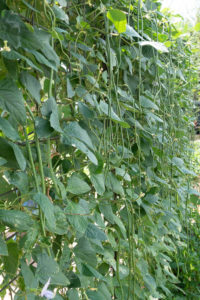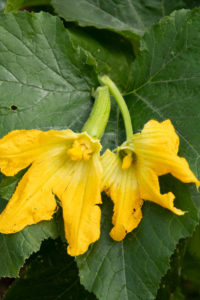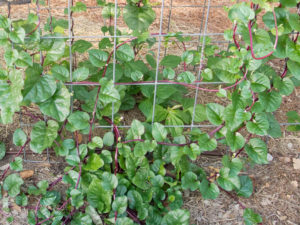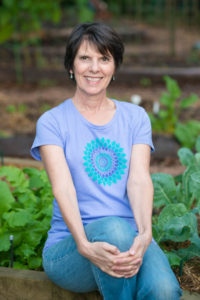
Yard long beans, also known as asparagus beans, can take the heat of a Central Texas summer. These beans are related to Southern peas and grow long, slender pods. Harvest before the beans inside enlarge – no shelling required.
Hurray for the May vegetable garden! The rush of spring planting has passed, the chance for unexpected cold snaps is over and we are headed toward summer and the much-anticipated vegetable harvest.
May Vegetable Garden Checklist
WATER
- Conserve water by using drip irrigation or soaker hoses to deliver moisture to the root zone and avoid overhead watering which may encourage disease. If you have automatic irrigation, be sure to turn it off when rain is in the forecast.
FERTILIZE
- Help vegetable plantings along by providing consistent moisture and fertilizer. Unlike shrubs, trees and perennial plants that grow and mature over several months or years, vegetables are grown from seed to harvest in a very short span and plants respond favorably to frequent (every 3-4 weeks) applications of fertilizer. A water-soluble garden fertilizer or fish emulsion, prepared according to package directions and watered into the root zone, is an easy way to feed plants.
MAINTENANCE
- Keep up with weeds that invade planting beds – they will take water and nutrients intended for vegetables. Pull up or hoe when they are small, before they have a chance to produce seed.
- Utilize tender weeds and fresh grass clippings in the compost pile as a “green” (nitrogen source). Mix or layer with a “brown” (carbon source) such as dried leaves, shredded newspaper, organic straw and/or chopped dried plant material.
DISEASES/PESTS TO LOOK FOR

An immature squash develops at the base of the female bloom on the left.
- Observe the flowers on squash plants. Male blooms – bright yellow flowers atop long, slender stems – are usually the first to appear. The female blooms, which have a miniature squash fruit at the base of the flower, will soon follow. The female flower must be pollinated in order for the fruit to develop. If you covered squash plants to protect from squash vine borer damage uncover once you see female blooms so that pollinators have access to blooms. Squash will be ready for harvest a few weeks after pollination.
PLANT

Malabar spinach produces dark green, succulent leaves all summer long.
- Plant Malabar spinach, amaranth or molokhia for summer greens that can be used in salads, wraps, omelets or casseroles. Harvest the leaves when they are young and tender, before they have a chance to go to seed.
HARVEST
- Potatoes planted in February should be large and vigorous by now. In the next few weeks check the base of the plants for new potatoes – if they are big enough to eat carefully harvest a few individual tubers without disturbing the plant. The remaining tubers can be harvested when they have increased in size and the tops begin to yellow, which generally happens in early June.
Additional Resources
Recommended Vegetable Varieties for Travis County
Sustainable Food Center Farmers Markets
Monthly Gardening Calendar for Austin and Central Texas

